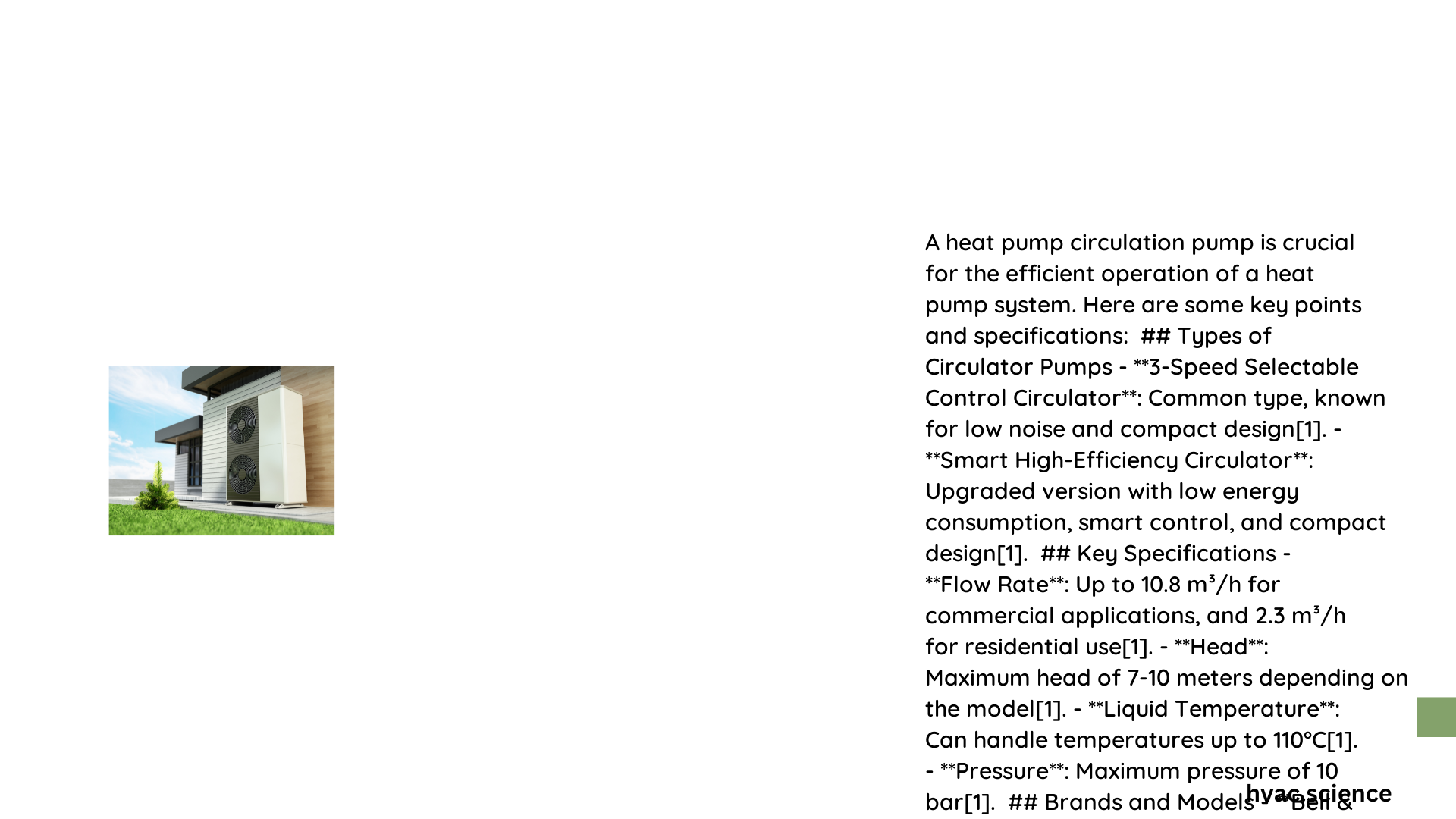Heat pump circulation pumps are critical components in modern heating and cooling systems, responsible for efficiently transferring thermal energy between indoor and outdoor units. These specialized pumps ensure precise refrigerant circulation, enabling optimal heat transfer and maintaining consistent temperature control across residential and commercial environments. Understanding their technical specifications, installation requirements, and maintenance protocols is essential for maximizing system performance and longevity.
What Makes Heat Pump Circulation Pump Essential?
Heat pump circulation pumps represent the cardiovascular system of thermal transfer mechanisms, enabling seamless energy movement through refrigerant lines. Their sophisticated design allows for precise temperature regulation and energy-efficient operation across diverse environmental conditions.
Key Performance Characteristics
| Parameter | Typical Range | Significance |
|---|---|---|
| Flow Rate | 350-400 CFM/12,000 BTU | Determines thermal transfer efficiency |
| Static Pressure | <0.8 inches water column | Impacts system performance |
| Temperature Split | Manufacturer-specific | Indicates operational effectiveness |
How Do Heat Pump Circulation Pumps Work?

Heat pump circulation pumps operate through a complex thermodynamic process:
- Refrigerant Compression: Compresses low-pressure refrigerant
- Heat Transfer: Moves thermal energy between indoor and outdoor units
- Pressure Regulation: Maintains optimal refrigerant pressure
- Temperature Modulation: Enables precise heating and cooling
Critical Installation Considerations
What Tools Are Required?
- Hole saw or precision drill
- Flaring tool
- Torque wrench
- Vacuum pump
- Refrigerant charging scale
- UV-resistant insulation tape
Where Should Circulation Pump Be Positioned?
- Level, stable surface
- Well-drained soil
- Minimum manufacturer-recommended clearance
- Protected from direct environmental exposure
What Maintenance Strategies Maximize Pump Efficiency?
Regular Inspection Protocols
- Monthly Checks:
- Verify refrigerant charge
- Inspect condensate drain
-
Examine insulation integrity
-
Annual Maintenance:
- Comprehensive system evaluation
- Leak detection
- Connection security assessment
Troubleshooting Common Issues
How to Diagnose Performance Problems?
- Measure airflow rates
- Check temperature differentials
- Evaluate refrigerant pressure
- Inspect line set for potential kinks
- Verify electrical connections
What Factors Impact Circulation Pump Efficiency?
Technical Performance Metrics
- Energy Consumption: Meets HSPF2 and SEER2 standards
- Temperature Range: Operates effectively across -15°F to 115°F
- Coefficient of Performance (COP): Typically 3-4 for modern systems
Optimization Strategies
- Proper system sizing
- Regular maintenance
- High-quality refrigerant
- Professional installation
What Are Advanced Diagnostic Techniques?
Precision Measurement Tools
- Digital manifold gauges
- Infrared thermometers
- Vacuum micron gauges
- Refrigerant recovery equipment
Conclusion
Heat pump circulation pumps represent sophisticated thermal transfer technologies requiring specialized knowledge for optimal performance. Professional installation, consistent maintenance, and understanding technical nuances ensure long-term efficiency and reliability.
